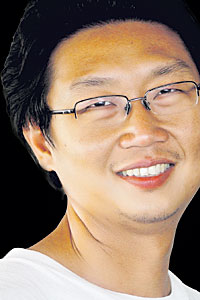In front of a mega mall, a big Christmas tree towers above the people. Its shining stars, golden bells and various decorative items fascinate all shoppers. They all take out their mobiles and happily snap pictures.
Meanwhile above their heads, a drone is flying. Someone — probably the organiser of the event — is controlling the unmanned aerial vehicle to take pictures of the festive atmosphere. This Christmas, drones are a very popular gift. It is reported that demand for mini drones is so high that manufacturers are having to rapidly increase production.
This is a merry season. It's also a season for photo taking — it's likely that people snap more pictures during this time of year than any other period, including Songkran, which is less photogenic.
Advancement in the manufacture of drones — which allow you to take pictures from a very high angle — are another "step forward" for our image-obsessed society. Today, the convenience of taking photos only increases that feeling. Advanced photography today is a far cry from the past, when taking pictures was a real task that required skill and training.
I still remember the time before drones and phone cameras. It was the time of film — real, 35mm film.
Let me reminisce. There are two kinds of film: negative film and slide film. For printing jobs, slide film is preferred as it produces accurate colours. But taking pictures by slide film requires high skill in measuring light. As cameras in that era could not distinguish between dark and light colours, it was the photographer's duty to get the correct exposure. Mistakes could easily ruin the picture.
You never knew if the picture was good until the film was developed. Therefore, photographers in that era worked with knowledge, skill and high caution.
Then digital cameras were invented. Photography became easier. Underwater photographers I've talked to are now happy because they're no longer limited to 36 shots for each dive. With big memory cards, photographers can take hundreds of shots continually in extreme conditions like in sport events, special occasions, riots, etc.
The thing I love most about digital cameras is that I can see the pictures right after shooting. Smartphones with cameras are now basic. I remember people fearing a loss of privacy for a while. This was why mobile phones were originally banned in gym changing rooms, but today, nobody cares about that. We are now more accepting of technology in our daily lives.
As cameras are readily available and much easier to use, we see more pictures and videos than in the past. Convenience, however, has come at a cost — as we have more pictures in the world than beautiful, impressive and stunning images, what we now see are group pictures, selfies and food shots. Cameras should help us capture what's beyond ourselves — instead, they have turned us more inward.
Except hidden cameras maybe. These days you can find a number of tiny cameras spying on us: on drones, in lighters, memory sticks, pens, clocks and even shirt buttons. Who knows, there may be a camera hidden in that Christmas tree, watching out for thieves.
Besides that flying drone, I noticed a CCTV camera perched around the corner. We are being watched all the time by someone we don't know. The proliferation of cameras is a blessing, but also something that opens up further discussion about what is best for society.
Merry Christmas. May you take many photos, and have many taken of you, during this festive period.
Peerawat Jariyasombat is a travel writer for Life section of the Bangkok Post.
